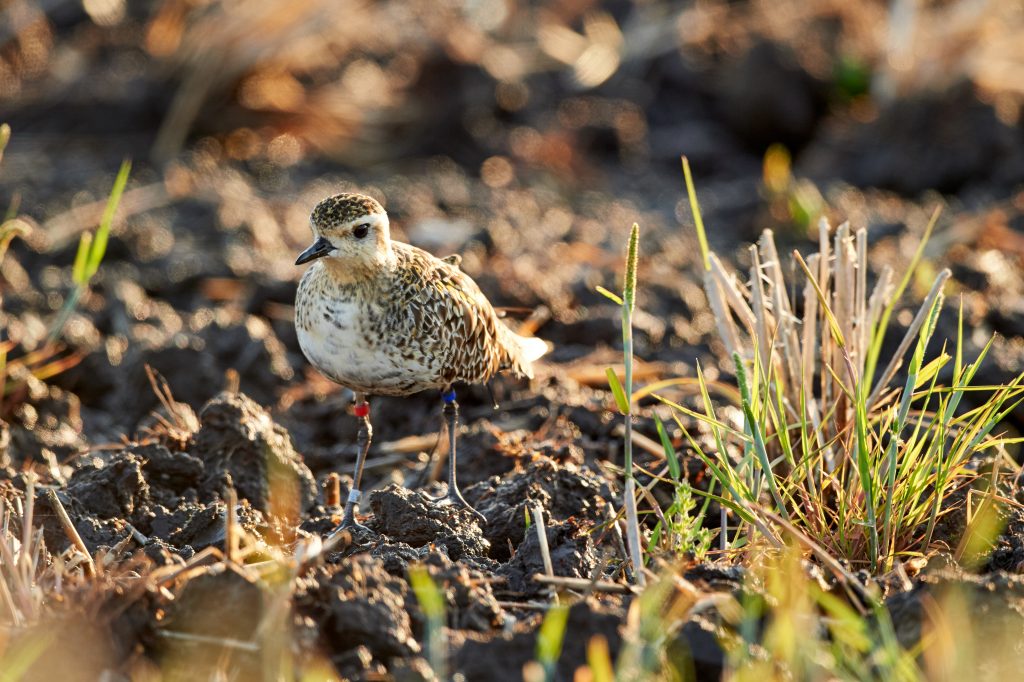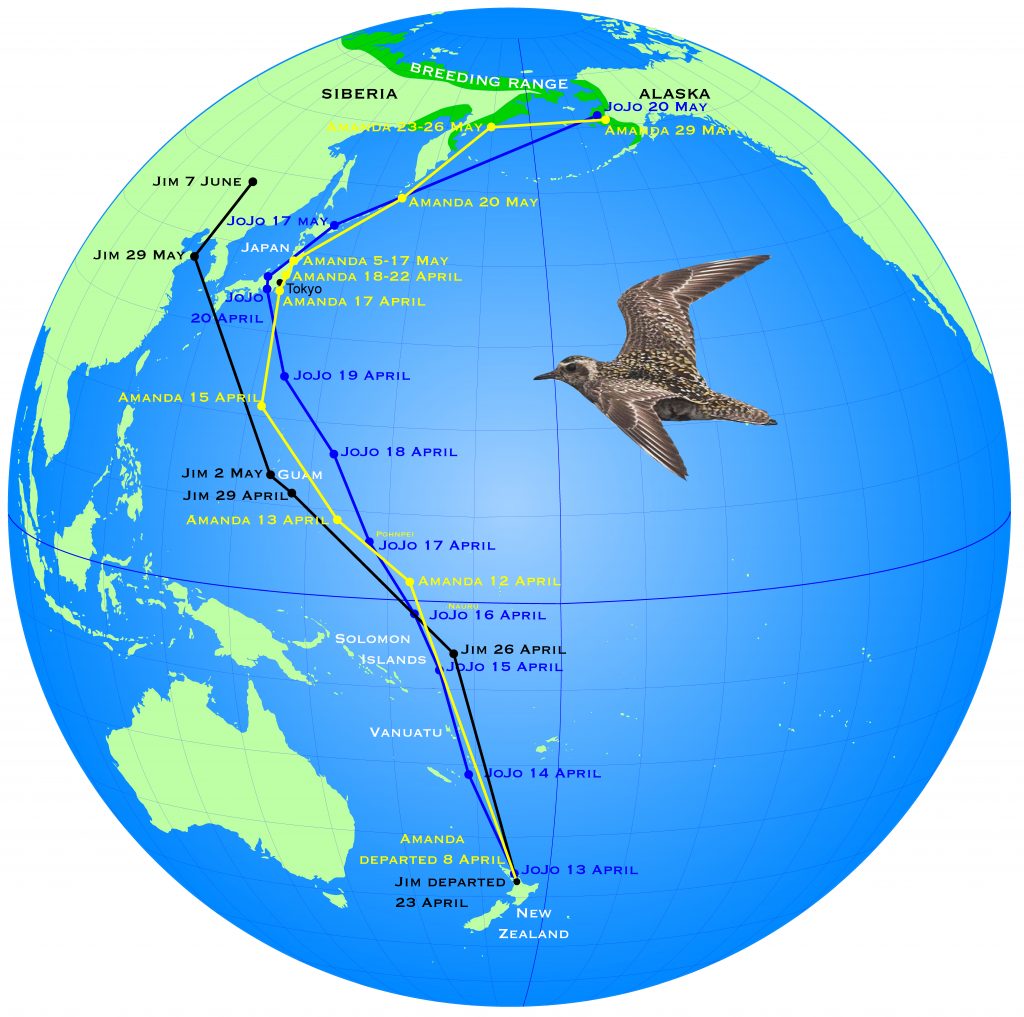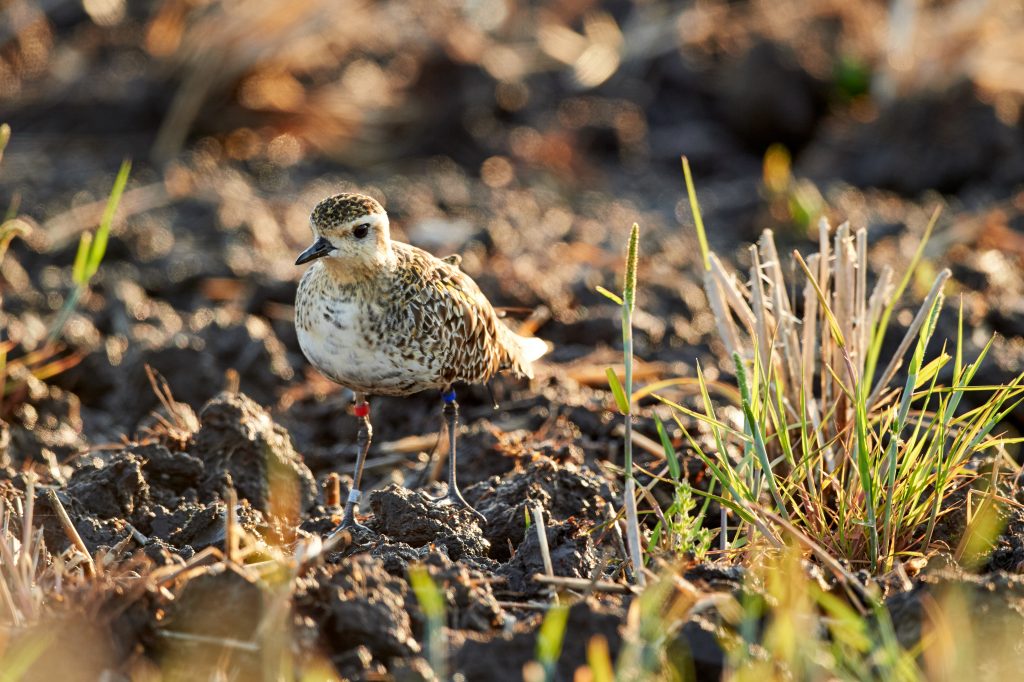The members of the Pukorokoro Miranda Naturalists’ Trust (PMNT) have been concerned for some time at the declining numbers of Pacific Golden Plover that appear in New Zealand each year. This species has never visited in high numbers in New Zealand but in recent years this migratory species has declined markedly.
In discussions relating to this issue, Jim Eagles realized that nothing was known of the migration route of these birds to or from New Zealand, nor even where they bred in the high Arctic. After discussing with Wally Johnson and students of the Brigham Young University Hawaii who have been undertaking research on this species in the Pacific Islands for a number of years, a project was developed to discover these aspects.
Jim Eagles and Alistair Harlow from the PMNT initiated a fundraising programme to purchase ten backpack satellite transmitters which the team from Hawaii would come to New Zealand and help catch the birds and install these devices. The money was raised to enable the purchase of the transmitters to proceed.
The team from Hawaii arrived in February with the aim of assisting Adrian Riegen and the PMNT team in catching 10 birds using the devices that had been pre-programmed by Lee Tibbitts from the US Geological Survey Science Centre in Alaska. The birds had been closely observed by JoJo Doyle and Amanda Hunt. Yet, the birds proved difficult to catch and only 3 were caught despite several determined efforts.
The birds were followed around their Miranda feeding areas until the migration commenced in April. The three birds departed over a two-weeks period. Because of the intermittent reporting programmed on the transmitters and the requirement to obtain 3 simultaneous readings from satellites the reports were spasmodic. This spaced reporting is for conserving battery life so the return journey could also be mapped.
However, it soon became apparent that two of the birds had traveled non-stop, over nearly 10,000km to Japan and the team made arrangements with Tomoko Ichikawa from the Japanese Ministry of the Environment to organise a team to scour the sites where the signals had originated. With the coordination of Mr. Toshifumi Moriya, colleagues in Japan including EAAFP Photographer Eugene Cheah, started to search for the Plovers. People responded through SNS and Mr. Kanata Takaoka shared a photo of rice paddies with Pacific Golden Plovers resting around the area one of the Plovers named JoJo, the signal was indicating, in Niigata Prefecture.

The tagged Pacific Golden Plover “Amanda” found by Mr. Hiromi Kano in the evening rice paddy. He was very excited. Photo credit: Mr. Hiromi Kano
Japanese colleagues kept on observing, and Mr. Hiromi Kano finally found one bird, named as Amanda in Miyagi Prefecture, approximately 350kms away to the northeast from Chiba Prefecture where she first landed. Mr Kano obtained excellent photographs of the bird in a paddy field there, and the bands were clearly visible. We thank the observers for their efforts.
Meanwhile, the third bird had stopped on Guam and appeared to be settled in that area and was eventually found and photographed by Scott Vogt, a US Navy biologist stationed on the island.
In the middle of May the two birds which were in Japan left and headed to the Yukon Delta in Alaska. One of them flew directly to the site while the other made a brief stopover in Russia. These birds are now settled into a breeding area on the Yukon Delta only 70kms apart. In the meantime, the third bird has now left Guam and at the last report was in the middle of China heading towards the high Russian Arctic area.

Map prepared by Arian Riegen
This project has provided a huge amount of information that was not previously known about the migration route from New Zealand and has also proved to be wonderful at pulling together people from New Zealand, Japan and America. This proves the international nature of these migratory birds and the reason why the Flyway Partnership is so important in developing cooperation at international level.





